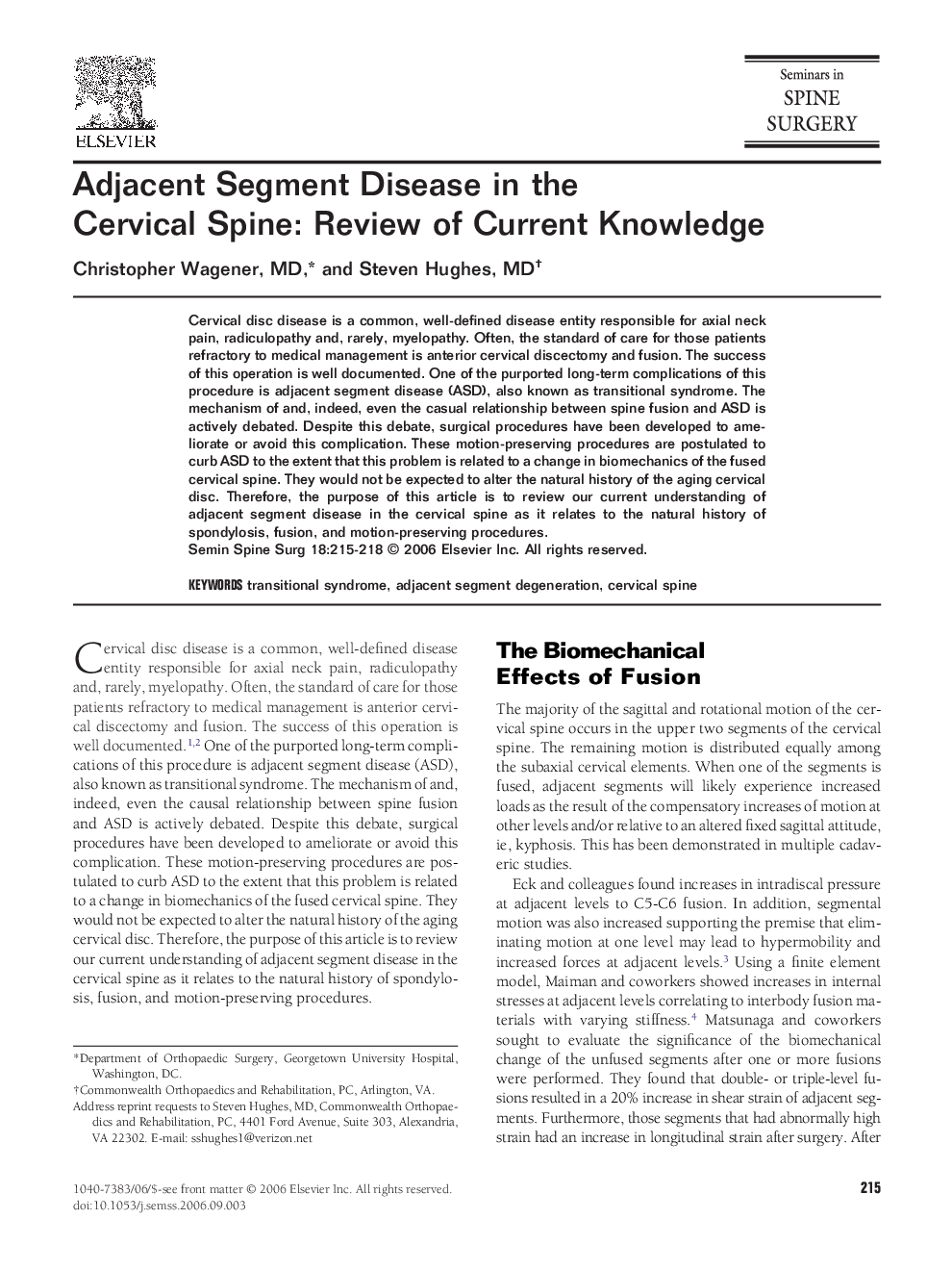| Article ID | Journal | Published Year | Pages | File Type |
|---|---|---|---|---|
| 4095150 | Seminars in Spine Surgery | 2006 | 4 Pages |
Cervical disc disease is a common, well-defined disease entity responsible for axial neck pain, radiculopathy and, rarely, myelopathy. Often, the standard of care for those patients refractory to medical management is anterior cervical discectomy and fusion. The success of this operation is well documented. One of the purported long-term complications of this procedure is adjacent segment disease (ASD), also known as transitional syndrome. The mechanism of and, indeed, even the casual relationship between spine fusion and ASD is actively debated. Despite this debate, surgical procedures have been developed to ameliorate or avoid this complication. These motion-preserving procedures are postulated to curb ASD to the extent that this problem is related to a change in biomechanics of the fused cervical spine. They would not be expected to alter the natural history of the aging cervical disc. Therefore, the purpose of this article is to review our current understanding of adjacent segment disease in the cervical spine as it relates to the natural history of spondylosis, fusion, and motion-preserving procedures.
